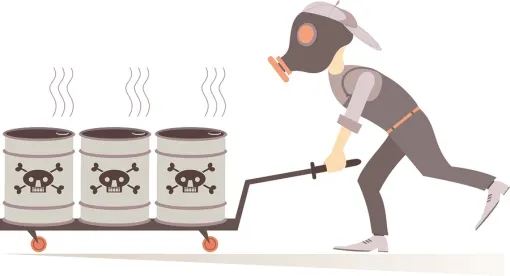On September 4, 2020, the United States Environmental Protection Agency (EPA) released the final scoping documents for the next 20 chemicals it has designated as “high priority” for risk evaluation under the Toxic Substances Control Act (TSCA). If EPA’s risk evaluation process identifies an “unreasonable risk” associated with any use of a chemical, TSCA requires the agency to regulate the risk. That means manufacturers, distributors, and retailers alike may soon be grappling with new regulations and increased litigation risk as EPA moves forward with its analyses and public scrutiny of these chemicals intensifies.
EPA has been analyzing “high priority” chemicals since 2016, when Congress amended TSCA to give EPA significantly more regulatory power. TSCA initially required EPA to select 10 chemicals in 2016 on which to begin risk evaluations. As of December 2019, TSCA now requires EPA to have 20 “high priority” risk evaluations ongoing at any given time. Although EPA generally has wide discretion in selecting which chemicals it will analyze, at least 50% of them must be drawn from EPA’s 2014 Update of its TSCA Work Plan.
The 20 new scoping documents describe the “conditions of use” EPA plans to analyze for each chemical to determine whether it poses an “unreasonable risk” to human health or the environment. As the scoping documents detail, these 20 chemicals (listed below along with some of their common uses) are widely used in consumer and industrial products.
Of particular note is EPA’s approach to formaldehyde, which has been a hot-button issue in recent years as consumer groups have attacked EPA’s handling of the chemical. When EPA announced its “Framework Rule” for its approach to risk evaluations, it indicated that it would exercise discretion to exclude from its analyses any “uses” that were already regulated by other laws—for example, the Clean Air Act or the Clean Water Act. Accordingly, EPA has explicitly chosen to exclude composite wood products already regulated by TSCA Title VI from its formaldehyde risk evaluation on the grounds that the risk (if any) is adequately controlled by an existing regulation.
EPA’s exclusion of TSCA Title VI-regulated products from its analysis may prompt further criticism from consumer groups, who have already successfully attacked [Link to attached PDF] EPA’s decision to exclude certain uses from a number of its first 10 risk evaluations. Those groups maintain that EPA must analyze all uses of a chemical—whether already regulated or not—to assess the full impact of the chemical on human health and the environment.
Companies potentially affected by this next round of risk evaluations should watch EPA closely over the next few months as it continues to release the final risk evaluations for the first 10 chemicals. EPA has only released two of those ten risk evaluations to date, despite TSCA’s June 2020 deadline for completing all 10. While it was clear long before COVID-19 hit that EPA would not meet that deadline, the effects of the pandemic have injected even more uncertainty into the process. EPA’s delay may spark legal challenges from consumer groups dissatisfied with EPA’s pace and with its conclusions. Those challenges could prompt EPA to change its approach to the next set of risk evaluations.
TSCA requires EPA to issue final risk evaluations for each of the 20 chemicals no later than December 20, 2022, but EPA is authorized to grant itself a one-time six month extension to June 20, 2023 if it needs more time to complete its risk evaluations.
EPA will also soon proceed with risk evaluations for two phthalates—di-isodecyl phthalate (DIDP) and di-isononyl phthalate (DINP)—at the request of industry stakeholders. Scoping documents for those chemicals have not yet been released, but companies should also keep them on their radars.
Links to each of the 20 final scoping documents, as well as non-exhaustive lists of common uses of each chemical, are provided below.
|
Final Scope Document |
Common Uses |
|
Adhesives and sealants; resins; sealants; fuels; synthetic rubber; tires; paints and coatings |
|
|
Plastics; resins; solvents; odor agents and air fresheners; synthetic dyes and pigments; cleaning and furnishing care products; lubricants and greases; plastic foam insulation and foam sealants; fuel additives |
|
|
Intermediate in organic chemical manufacturing; laboratory chemicals |
|
|
Intermediate in manufacturing (petrochemical, plastic material and resin, organic chemicals); adhesives and sealants; lubricants and greases; plastic and rubber products; embalming; degreasing and cleaning solvents |
|
|
Plating and surface treating agents; cleaning and degreasing solvents; adhesives and sealants; inks; aerosol spray cleaners/degreasers; spot and stain removers; refrigerants; polyurethane foam building insulation |
|
|
All-purpose liquid spray cleaners; waxes and polishes |
|
|
Fuels and related products; laboratory chemicals |
|
|
HHCB (1,3,4,6,7,8-Hexahydro-4,6,6,7,8,8-hexamethylcyclopenta [g]-2-benzopyran) |
Odor agents; soaps, fragrances; air fresheners; scented candles; cleaning products (including all-purpose liquid and bathroom cleaners); laundry products (including detergent and fabric softeners); plastic and rubber products |
|
Flame retardants; adhesive manufacturing; building and construction products; batteries; fabric, textile, and leather products |
|
|
Flame retardants; paint and coatings; plasticizers; lubricants and greases; fluids and oils; foam seating and bedding products; electrical and electronic products |
|
|
Plastic and petrochemical manufacturing; adhesives and sealants |
|
|
Flame retardants; aircraft interiors; paints and coatings; fabric, textile, and leather products; building and construction products; foam seating and bedding products |
|
|
Plasticizers; adhesives and sealants; plastics and resins; paints and coatings; arts, crafts, and hobby materials; automotive and interior car care products; batteries; building and construction products; dyes and pigments; electrical and electronic products; furniture and furnishings; fabric, textile, and leather products; lawn and garden care products; paints and coatings; plastic and rubber products; toys, playground, and sporting equipment |
|
|
Paints and coatings; plastics and resins; rubber products; adhesives; inks, toners, and colorants; asphalt paving; roofing materials; building and construction products; arts, crafts, and hobby materials |
|
|
Plasticizers; adhesives and sealants; paints and coatings; fuels and related products; inks, toners, and colorants; fabric, textile, and leather products; building and construction products; air fresheners; floor coverings; toys, playground, and sporting equipment; plastic and rubber products |
|
|
Plasticizers; asphalt paving; roofing materials; fabric, textile, and leather products; plastic and rubber products; adhesives and sealants; automotive care products; building and construction materials; floor coverings; inks, toners, and related products; paints and coatings; arts, crafts, and hobby materials; toys, playground, and sporting equipment |
|
|
Plasticizers; asphalt paving; roofing and coating materials; adhesives and sealants; pants and coatings; resins; rubber products; soap and cleaning products; cleaning and furnishing care products; furniture; inks, toners, and colorants; personal care products; arts, crafts, and hobby materials; fabric, textile, and leather products; floor coverings; toys, playground, and sporting equipment; light sticks |
|
|
Adhesives and sealants; paints and coatings; lubricants and greases; synthetic dyes and pigments; inks, toners, and colorants; plastic and rubber products; textile, apparel, and leather manufacturing; flame retardants; building and construction products; water filtration products |
|
|
Solvents; plastics; resins; lubricants and greases; inks, dyes, toners, and pigments; paints and coatings; air fresheners; cleaning and furnishing care products; fuel additives; ceramics glaze |
|
|
Adhesives and sealants; plastics and resins; soaps and cleaning compounds; bleaching agents in wood products; textile, apparel, and leather manufacturing finishing agents; roofing materials; paints and coatings; asphalt paving; solvents; floor coverings; foam seating and bedding products; cleaning and furniture care products; water treatment products; laundry and dishwashing products; personal care products; building and construction products; lawn and garden products; electrical and electronic products; food packaging; plastic and rubber products; inks, toners, and colorants; arts, crafts, and hobby materials; automotive care products; toys, playground, and sporting equipment |





 />i
/>i


